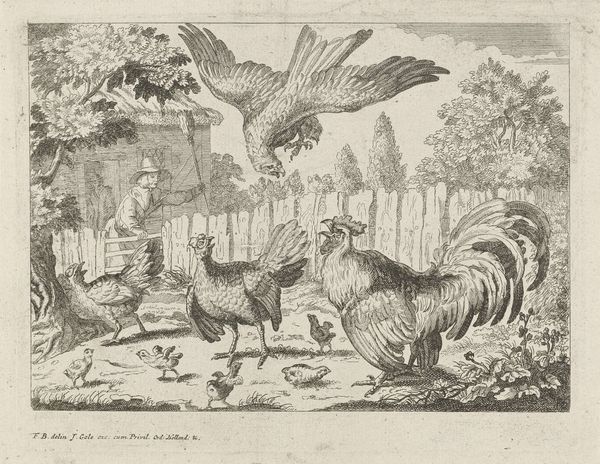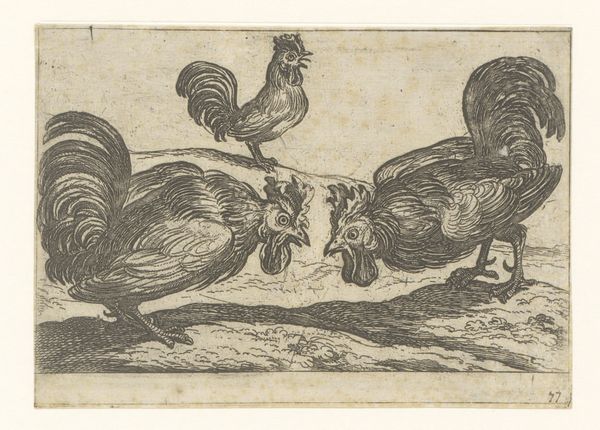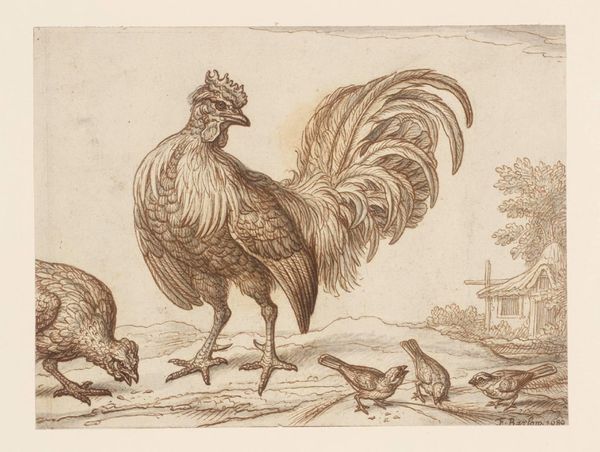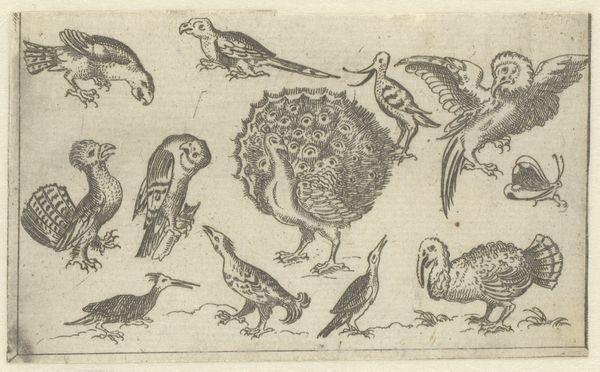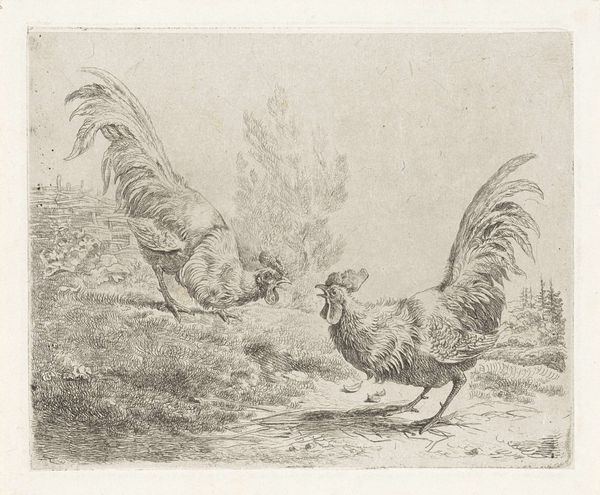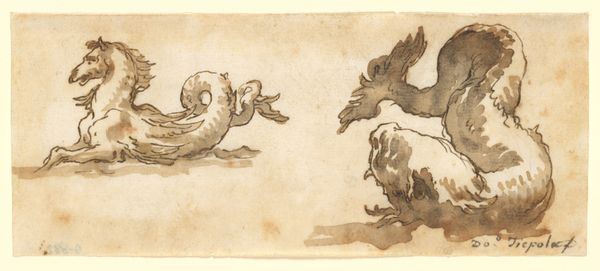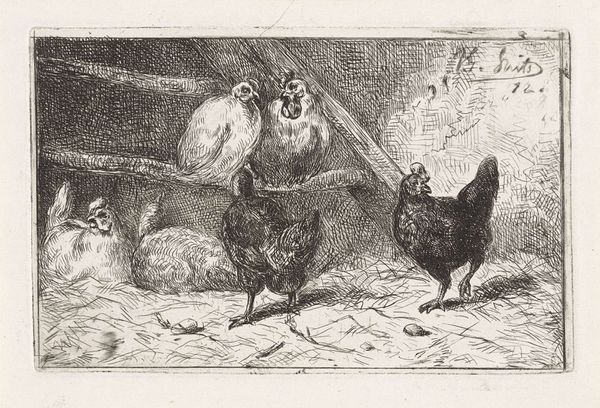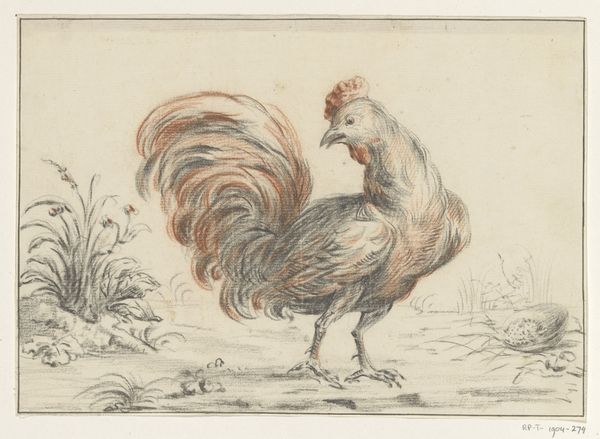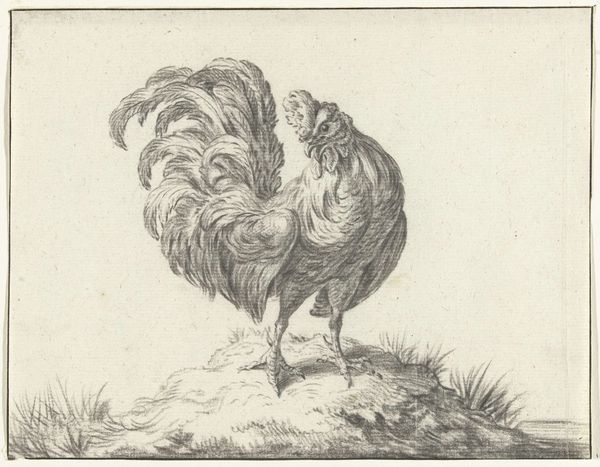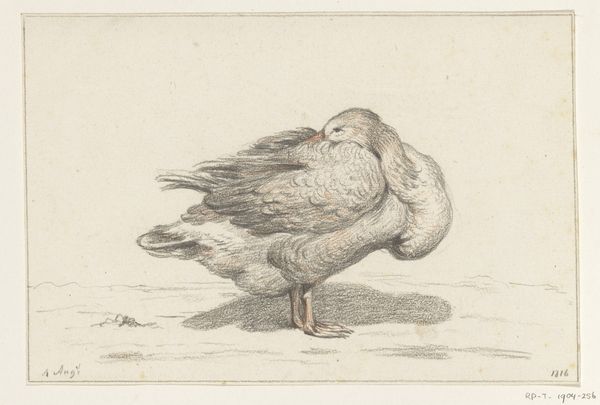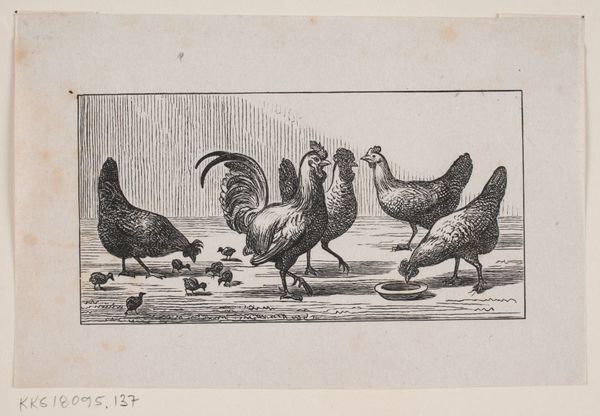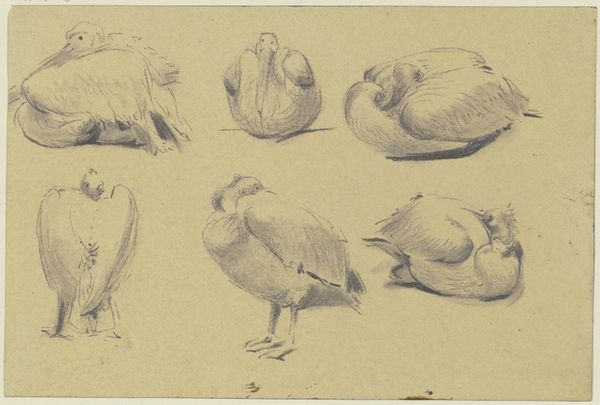
drawing, pencil
#
portrait
#
drawing
#
animal
#
pencil sketch
#
pencil
#
realism
Dimensions: height 233 mm, width 267 mm
Copyright: Rijks Museum: Open Domain
Curator: Here we have Albertus Verhoesen’s "Four Studies of Chickens," likely created sometime between 1816 and 1881, currently held at the Rijksmuseum. Editor: My immediate reaction is the beautiful lightness of this pencil drawing. There’s a real sense of immediacy in these poses—almost as if Verhoesen captured the chickens mid-motion. Curator: Indeed. Consider the artist's meticulous use of line to delineate form and texture. Each chicken presents a study in curvature and volume, from the plump bodies to the delicate rendering of feathers. Editor: But it is also interesting to consider the actual labor here, right? What was Verhoesen actually intending to do with this drawing? How would such sketches aid, perhaps, in creating later works—where the animal became a form for study, rather than for some aesthetic merit of its own? The social context seems essential here. Curator: I agree; but I'd also contend that there *is* considerable aesthetic merit in what we are witnessing! There is, arguably, also an emotive narrative; in the seemingly casual arrangement of forms on a plane there is also an emotional quality to the observation. The upper fowl with its rear pointed to us appears especially whimsical, if not humorously deconstructed. Editor: True! What I like is considering how art such as this often becomes enmeshed with agriculture and labor itself. The question remains: are the chickens here, on some level, products, resources even when seen through the aesthetic lens? And how is that labor shown—or obscured—here in these sketches? Curator: Perhaps! But I think it's more than this utilitarian focus; the very choice to use pencil—a medium that invites a certain freedom—contributes to the image’s liveliness. These studies are hardly sterile depictions; they speak of the artist’s deep understanding of natural forms. Editor: Ultimately, the intersection between this close observation and artistic intent becomes the real point. It invites us to reevaluate artistic worth beyond just line and composition. Curator: A perspective that challenges us to think about where art starts! Editor: And, perhaps, how everyday labor also ends.
Comments
No comments
Be the first to comment and join the conversation on the ultimate creative platform.
